Bar Charts MCQs
Welcome to our comprehensive collection of Multiple Choice Questions (MCQs) on Bar Charts, a fundamental topic in the field of Data Interpretation. Whether you're preparing for competitive exams, honing your problem-solving skills, or simply looking to enhance your abilities in this field, our Bar Charts MCQs are designed to help you grasp the core concepts and excel in solving problems.
In this section, you'll find a wide range of Bar Charts mcq questions that explore various aspects of Bar Charts problems. Each MCQ is crafted to challenge your understanding of Bar Charts principles, enabling you to refine your problem-solving techniques. Whether you're a student aiming to ace Data Interpretation tests, a job seeker preparing for interviews, or someone simply interested in sharpening their skills, our Bar Charts MCQs are your pathway to success in mastering this essential Data Interpretation topic.
Note: Each of the following question comes with multiple answer choices. Select the most appropriate option and test your understanding of Bar Charts. You can click on an option to test your knowledge before viewing the solution for a MCQ. Happy learning!
So, are you ready to put your Bar Charts knowledge to the test? Let's get started with our carefully curated MCQs!
Bar Charts MCQs | Page 1 of 10
What is the ratio of the total sales of branch B2 for both years to the total sales of branch B4 for both years?
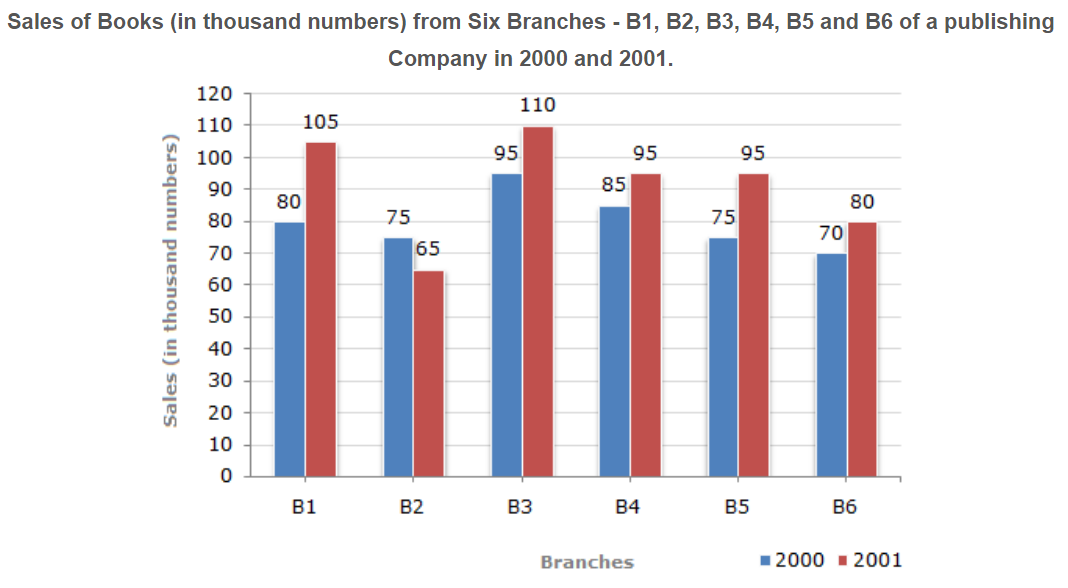
Total sales of branch B6 for both the years is what percent of the total sales of branches B3 for both the years?

What percent of the average sales of branches B1, B2 and B3 in 2001 is the average sales of branches B1, B3 and B6 in 2000?
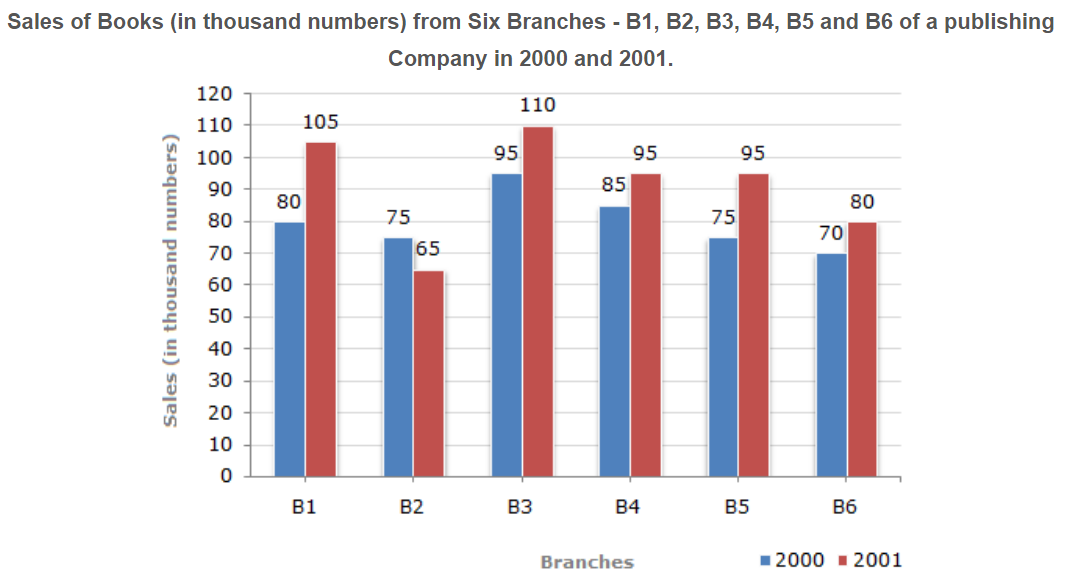
What is the average sales of all the branches (in thousand numbers) for the year 2000?
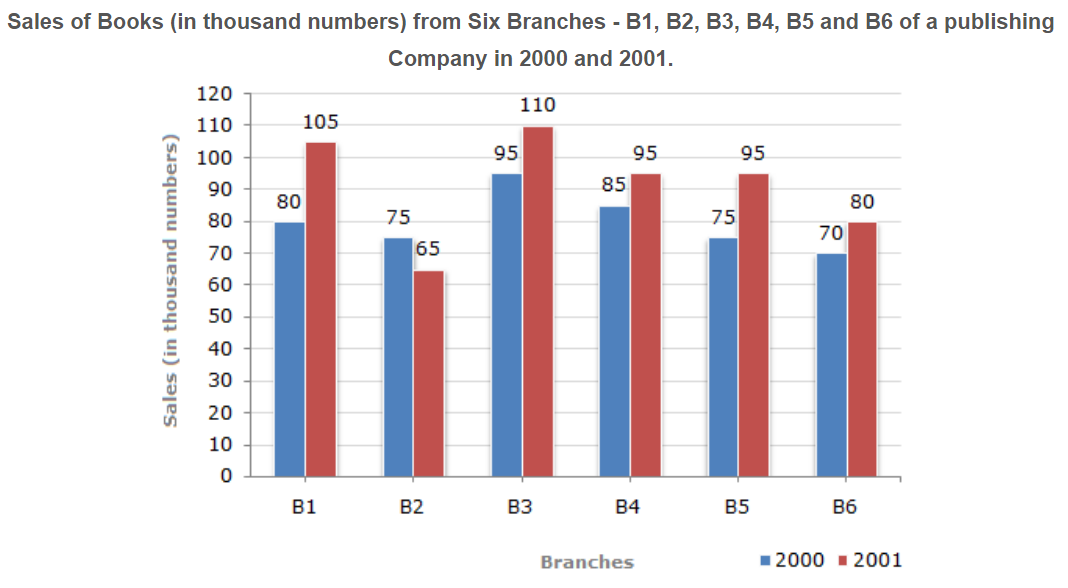
Total sales of branches B1, B3 and B5 together for both the years (in thousand numbers) is?
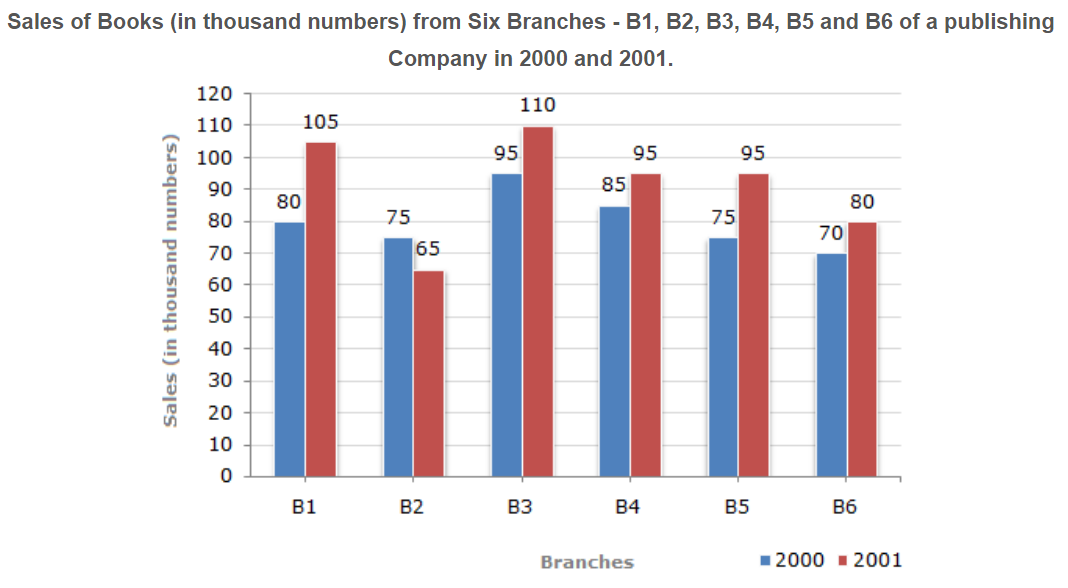
The ratio of the number of years, in which the foreign exchange reserves are above the average reserves, to those in which the reserves are below the average reserves is?

The foreign exchange reserves in 1997-98 was how many times that in 1994-95?
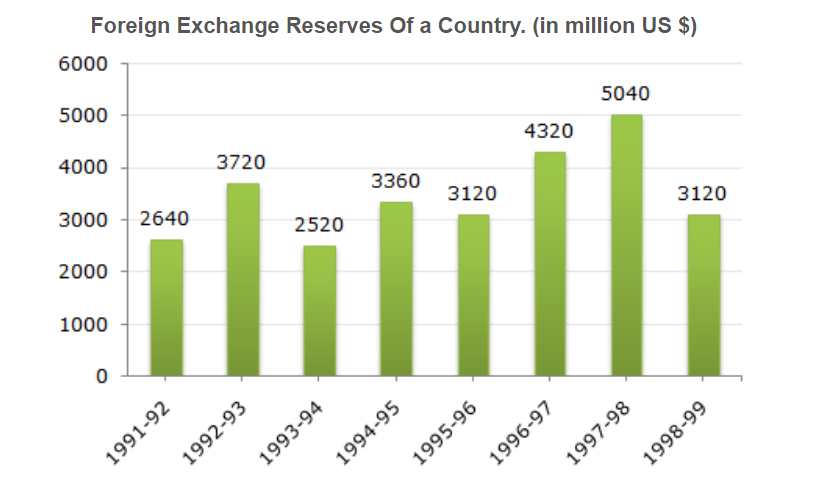
For which year, the percent increase of foreign exchange reserves over the previous year, is the highest?

The foreign exchange reserves in 1996-97 were approximately what percent of the average foreign exchange reserves over the period under review?
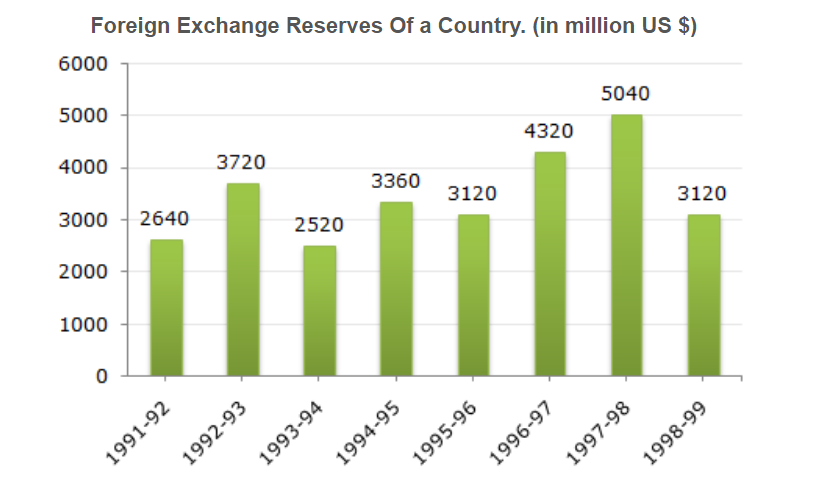
What was the percentage increase in the foreign exchange reserves in 1997-98 over 1993-94?
